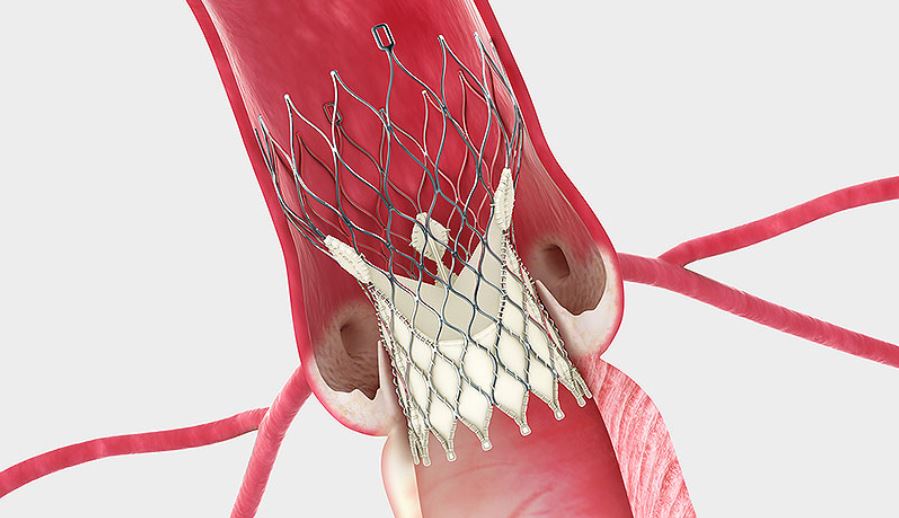Key points:
• The APAF-CRT trial was a two-phase trial conducted among patients with permanent atrial fibrillation (AF) and narrow QRS (<110 ms) with ≥1 heart failure hospitalizations but considered unsuitable for AF ablation. The goal of this study was to compare two rate control strategies, and understand whether atrioventricular junction (AVJ) ablation followed by cardiac resynchronization therapy (CRT) is superior to pharmacological rate control.
• In 2018, the results from the first phase (APAF-CRT Morbidity) found that AVJ ablation + CRT significantly reduced the composite outcome of death due to heart failure (HF), heart failure hospitalizations (HHF) or worsening HF at 16 months, compared to pharmacological rate control.
• Now, the second phase of the trial (APAF-CRT Mortality) also found that AVJ ablation + CRT was associated with a 27% absolute reduction in all-cause mortality at 4 years of follow-up, compared to pharmacological rate control.
Atrial Fibrillation (AF) is a chronic comorbidity associated with heart failure in over 50% of patients, as the two conditions can both be the trigger or the result of each other, and synergistically interact to create a heavy burden of symptoms that are difficult to control. In 2018, the CASTLE-AF trial showed that catheter ablation is superior to medical therapy (whether pharmacological rate or rhythm control) to reduce death or heart failure hospitalizations (HHF) among patients with HF with reduced ejection fraction (HFrEF). An accumulating body of evidence, including the recent EAST-AFNET 4 trial in 2020, suggests that rhythm control (whether via medical therapy or ablation) is superior to rate control in reducing major adverse cardiovascular events, especially if performed early in the AF disease process.
However, an optimal treatment strategy still needs to be identified for patients with symptomatic permanent AF, in which pharmacologic rhythm control or ablation has been unsuccessful, or who may not be suitable candidates for ablation. AVJ ablation followed by right ventricular (RV) pacing has been traditionally available for these patients, even though the non-physiological RV pacing has the potential to cause heart failure due to chronic left ventricular dissinchrony. While narrow QRS has been a contraindication for CRT in patients with narrow QRS and sinus rhythm, data from the BLOCK-HF trial in 2013 proved that, compared to RV pacing, CRT significantly reduces death and HHF among patients with complete atrioventricular block and reduced ejection fraction (EF), regardless of QRS.
In 2018, Dr. Michele Brignole, MD at the IRCCS Istituto Auxologico Italiano, San Luca Hospital, Milan, and colleagues conducted the APAF-CRT trial to further challenge the status quo of CRT indications. This was a small, randomized, multicenter, open-label, trial with blinded outcome, which assigned 133 patients with symptomatic permanent AF deemed unsuitable for ablation, narrow QRS (<110 ms) and heart failure with ≥1 HHF in the prior year to either pharmacological rate control or AVJ ablation + CRT (plus defibrillator in either arm according to guidelines). Notably, any ejection fraction (EF) was eligible for inclusion, with ~40% of patients with EF<35%. The primary endpoint of this trial was a combination of HF mortality, HHF or worsening HF. Although follow-up was planned for up to 36 months, the trial was terminated early at 16 months, after the pre-specified interim analysis found AVJ ablation + CRT to be superior to pharmacological rate control for the primary combined endpoint [20% vs 38%, hazard ratio (HR) 0.38, 95% confidence interval (CI) 0.18-0.81, p=0013], which was primarily driven by a significant reduction in HHF. While there was a numerically lower burden of deaths in the AVJ ablation + CRT arm, the APAF-CRT Morbidity trial was still underpowered to formally evaluate mortality as an individual outcome.
Auxologico Italiano, San Luca Hospital, Milan, and colleagues conducted the APAF-CRT trial to further challenge the status quo of CRT indications. This was a small, randomized, multicenter, open-label, trial with blinded outcome, which assigned 133 patients with symptomatic permanent AF deemed unsuitable for ablation, narrow QRS (<110 ms) and heart failure with ≥1 HHF in the prior year to either pharmacological rate control or AVJ ablation + CRT (plus defibrillator in either arm according to guidelines). Notably, any ejection fraction (EF) was eligible for inclusion, with ~40% of patients with EF<35%. The primary endpoint of this trial was a combination of HF mortality, HHF or worsening HF. Although follow-up was planned for up to 36 months, the trial was terminated early at 16 months, after the pre-specified interim analysis found AVJ ablation + CRT to be superior to pharmacological rate control for the primary combined endpoint [20% vs 38%, hazard ratio (HR) 0.38, 95% confidence interval (CI) 0.18-0.81, p=0013], which was primarily driven by a significant reduction in HHF. While there was a numerically lower burden of deaths in the AVJ ablation + CRT arm, the APAF-CRT Morbidity trial was still underpowered to formally evaluate mortality as an individual outcome.
However, the observed reduction in mortality reasonably justified the continuation of the dedicated APAF-CRT Mortality trial. On August 28th, 2021, Dr. Brignole presented the final results of the APAF-CRT Mortality trial at the annual European Society of Cardiology (ESC) Congress. At four years of follow-up, AVJ ablation + CRT was associated with a significant 27% absolute risk reduction in all-cause mortality compared to pharmacological rate control (41% vs 14%, HR 0.26, 95% CI 0.10-0.65, p=0.004) with a number needed to treat of 3.7. Notably, pre-specified sub-group analysis showed similar results both in patients with EF≤35% and EF>35%, and irrespective of heart rate achieved on treatment – although the sample size of each subgroup was rather small.
Taken together, results from the APAF-CRT study provide convincing evidence that biventricular pacing after AVJ ablation is beneficial to symptomatic patients with narrow QRS as compared to medical therapy, especially if they are not eligible for ablation. While subgroup analyses showed similar mortality benefits across the EF range, the evidence is currently insufficient to determine whether CRT is truly needed after AVJ ablation even in patients with preserved EF. Lastly, as physiologic His-Bundle pacing becomes more widely available, future trials should investigate how this novel technology compares to traditional CRT among patients with heart failure and atrial fibrillation.





